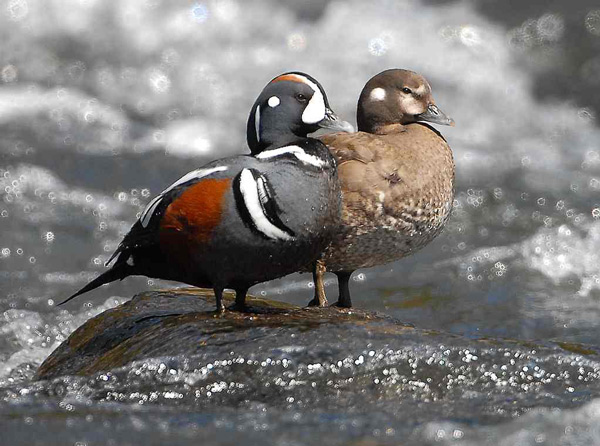
Abstract
Quantifying sources of variation in demographic rates can provide insight into processes underlying population dynamics and subsequently direct wildlife conservation. In the context of avian life history, understanding patterns of variation in survival rates of breeding females is particularly relevant because this cohort often has a disproportionately large effect on population dynamics. We estimated survival
probability for 144 adult female harlequin ducks (Histrionicus histrionicus) that we marked with radiotransmitters and tracked at 4 breeding areas in western North America.
Model selection results indicated both regional and temporal variation in survival rates, with most mortality attributed to predation. Cumulative survival probability (6SE) during the 100-day study period was lower at 2 sites in the Rocky Mountains of Alberta, Canada (AB1 and AB2: 0.75 6 0.11) than in the Coast Mountains of British Columbia, Canada (BC: 0.88 6 0.08) or the Cascade Mountains of Oregon, USA (OR: 0.89 6 0.08). Survival also was lower during incubation than nest-initiation or brood-rearing stages at all 4 study areas. In comparison to other annual cycle stages and locations, harlequin duck mortality rates were highest on the breeding grounds, suggesting that management actions designed to reduce mortality during breeding would achieve meaningful population-level benefits.
Read the whole paper here.
Citation
Bond, J. C., Iverson, S. A., MacCallum, N. B., Smith, C. M., Bruner, H. J. and Esler, D. (2009), “Variation in Breeding Season Survival of Female Harlequin Ducks”. The Journal of Wildlife Management, 73: 965–972. doi:10.2193/2008-236







